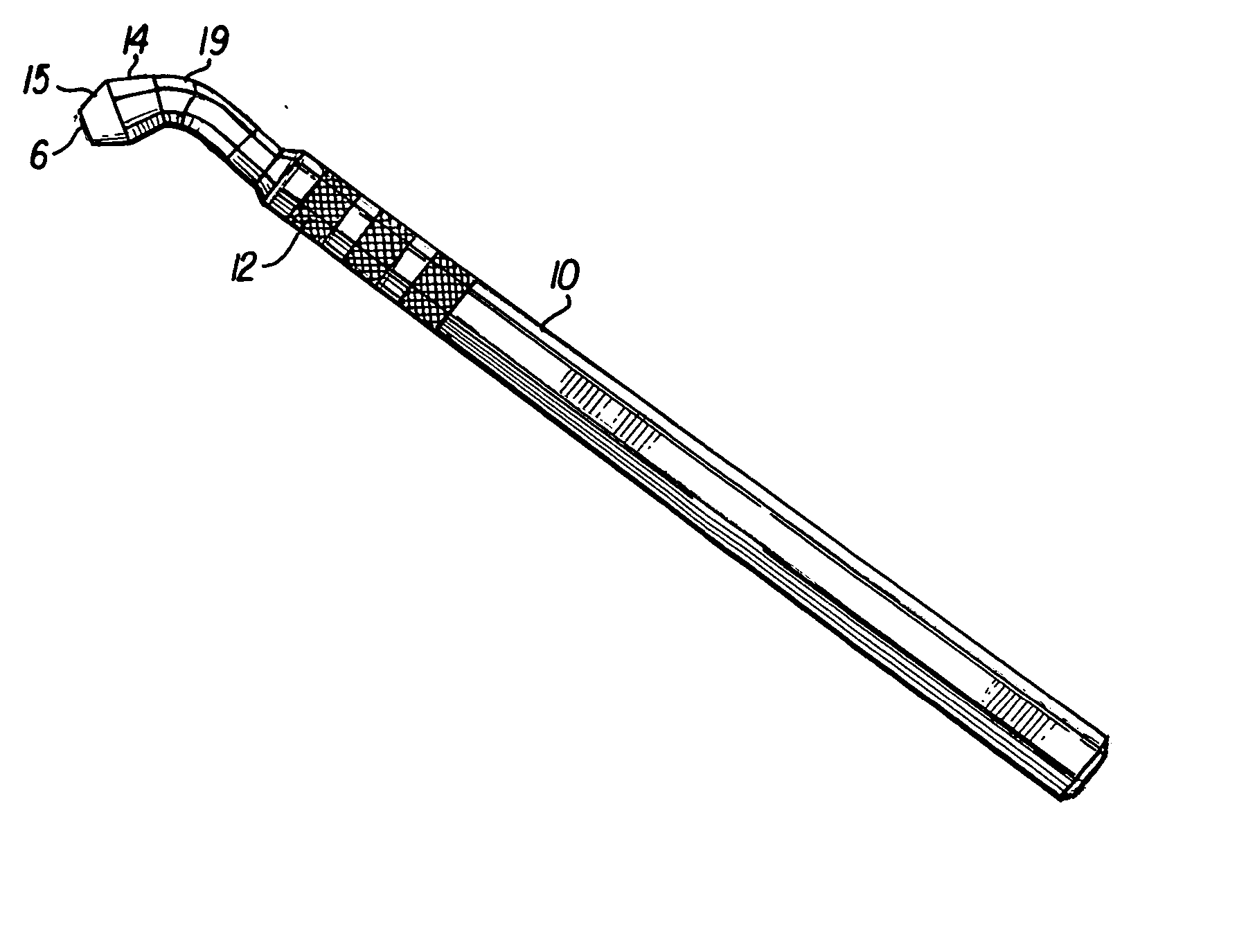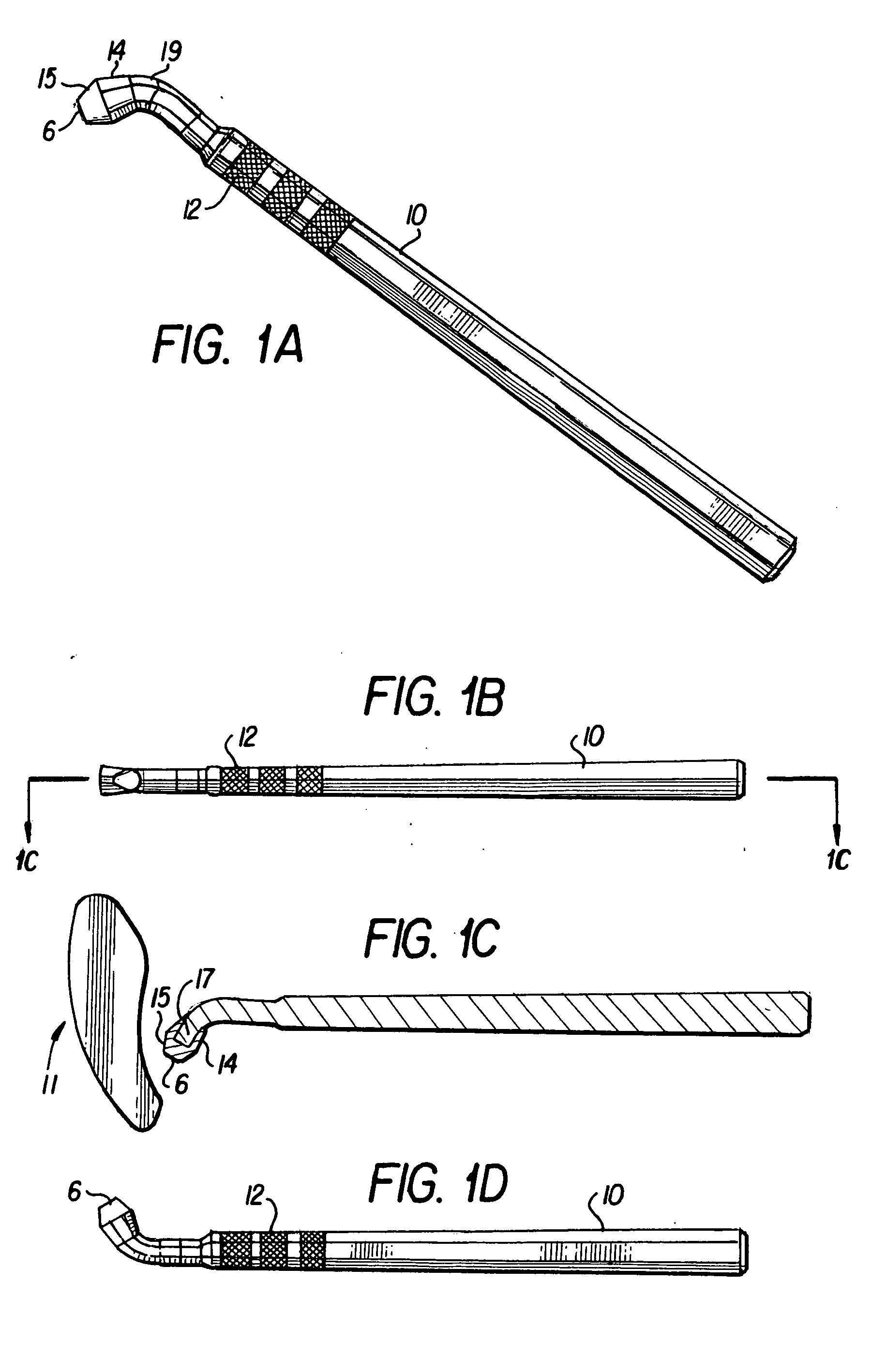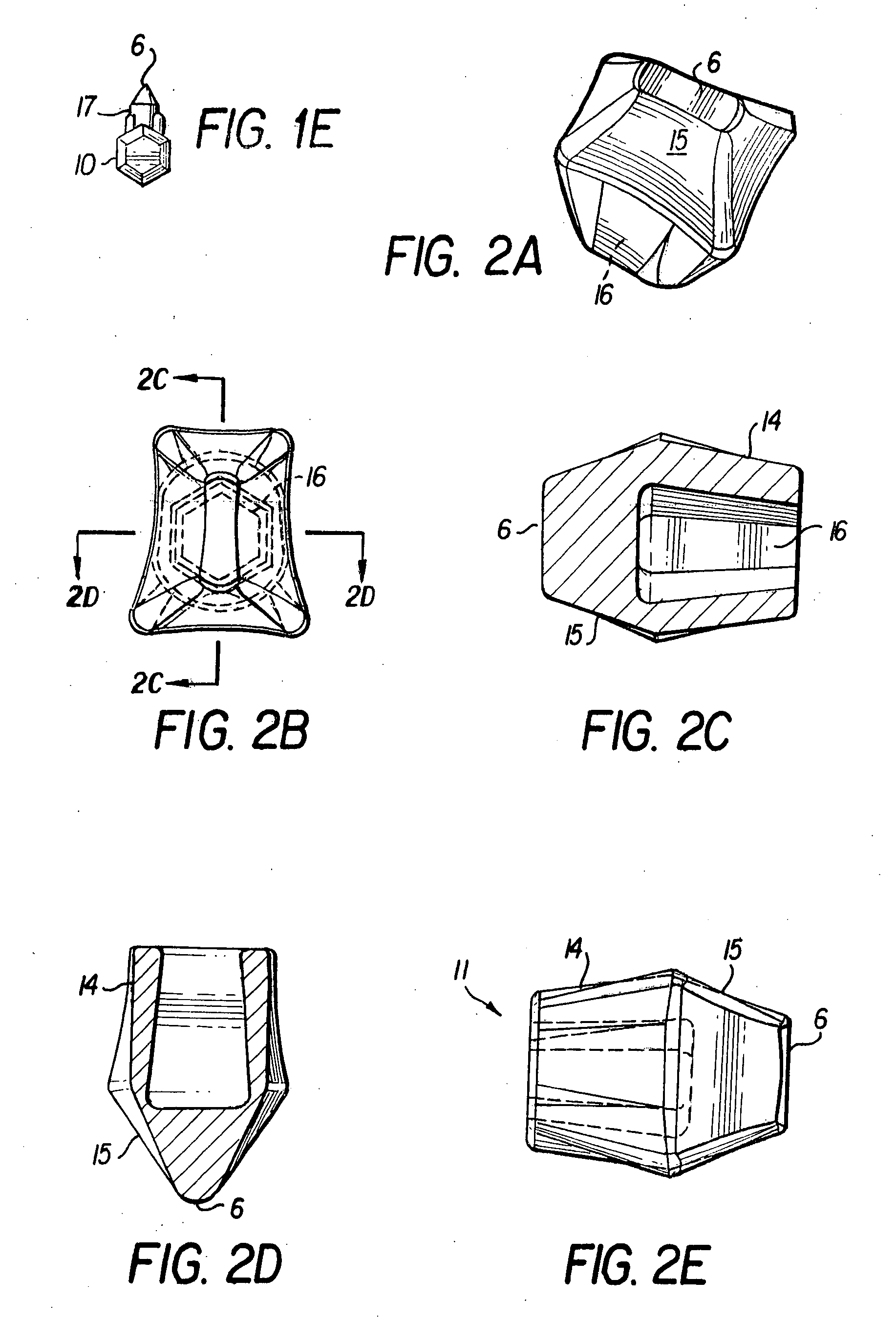Dental appliance and method for positioning and holding inlays and onlays during bonding and cementation process
a technology of dental appliances and inlays, applied in dental appliances, dental surgery, dental tools, etc., can solve the problems of difficult to see the restoration and direct the light to the portion of the restoration that the dentist has placed, and the tactile sensation is impaired, so as to achieve good visibility
- Summary
- Abstract
- Description
- Claims
- Application Information
AI Technical Summary
Benefits of technology
Problems solved by technology
Method used
Image
Examples
Embodiment Construction
[0033] The present invention will now be described in detail for specific preferred embodiments of the invention. These embodiments are intended only as illustrative examples and the invention is not to be limited thereto.
[0034] As seen in FIGS. 1A-1E and 5, a head 20 can be attached to a handle 10 that is made of a rigid material, for example an autoclavable plastic, such as vectra. Alternatively, the handle 10 can be disposable or chemically sanitizable. In yet another alternative, the handle 10 can be metal, ceramic, or a glass filled polycarbonate. The handle 10 can be solid or, more preferably, the handle 10 can be at least partially hollowed. For example, the handle 10 can be tubular. More specifically, it can be a circular tube, a tube with a square cross section, or a stiffened tubular design, for example. The handle 10 can also be hollowed by removing material from the handle, for example. The handle 10 can be a single material, or the handle 10 can be made from more than ...
PUM
 Login to View More
Login to View More Abstract
Description
Claims
Application Information
 Login to View More
Login to View More - R&D
- Intellectual Property
- Life Sciences
- Materials
- Tech Scout
- Unparalleled Data Quality
- Higher Quality Content
- 60% Fewer Hallucinations
Browse by: Latest US Patents, China's latest patents, Technical Efficacy Thesaurus, Application Domain, Technology Topic, Popular Technical Reports.
© 2025 PatSnap. All rights reserved.Legal|Privacy policy|Modern Slavery Act Transparency Statement|Sitemap|About US| Contact US: help@patsnap.com



